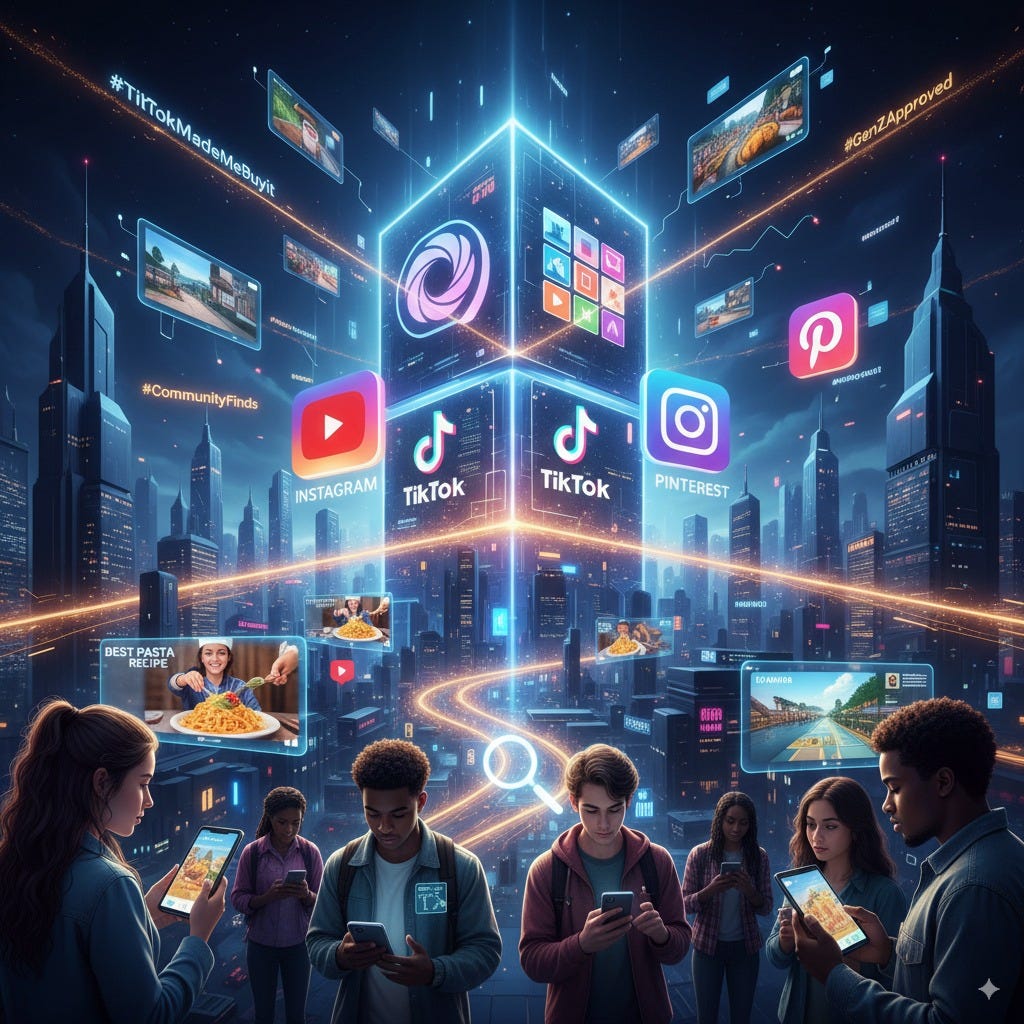Why Social Media and Video Are Becoming the New Search Engines?
Learn How Personalized Feeds, Video Content, and Influencer Communities Are Redefining Online Search.
Social media platforms and video-sharing sites are increasingly functioning as search engines for several compelling reasons:
1. Content Discovery and Recommendation Algorithms:
Personalized Feeds: Unlike traditional search engines that rely heavily on keywords, social media platforms use sophisticated algorithms to curate customized feeds based on user interests, past interactions, and demographic data. This means users often discover relevant content without actively searching for it.
Recommendation Engines: Platforms like TikTok, Instagram Reels, and YouTube are masters of recommending videos and content that users are likely to enjoy, even if they didn't know they were looking for it. This proactive discovery rivals the reactive nature of traditional search.
2. Visual and Experiential Search:
Show, Don't Just Tell: For many products, services, or how-to guides, a video demonstration or a series of engaging images is far more effective than text-based descriptions. Want to see how a recipe is made, how a new gadget works, or what a travel destination looks like? Video is often the preferred medium.
Authenticity and Relatability: User-generated content on social media often feels more authentic and relatable than polished marketing materials, leading to greater trust and influence. People seek out real experiences and reviews.
"TikTok Made Me Buy It": This popular phrase highlights the power of short-form video to drive purchasing decisions, often bypassing traditional product research on search engines.
3. Shifting User Behavior, Especially Among Younger Demographics:
Gen Z's Preferred Search Method: Numerous studies indicate that younger generations, particularly Gen Z, are more likely to turn to TikTok or Instagram for information discovery rather than Google. They might search for "best restaurants NYC" directly on TikTok to see video reviews and aesthetic presentations.
Ease of Consumption: Scrolling through short, engaging videos or image carousels can be a more entertaining and less laborious way to consume information compared to reading articles or sifting through search results.
4. Rise of Influencer Marketing and Community:
Trusted Voices: People often trust recommendations from influencers or creators they follow more than anonymous search results or traditional advertisements.
Community-Driven Information: Social media groups and comments sections provide a space for real-time discussions, questions, and answers, offering a dynamic information source that traditional search can't fully replicate.
5. Evolution of Content Formats:
Short-Form Video Dominance: The explosion of platforms like TikTok has normalized short, digestible video content as a primary way to convey information, from news updates to product reviews and educational snippets.
Visual-First Content: Instagram and Pinterest have long been powerful visual search engines for fashion, home decor, recipes, and more, allowing users to browse and discover ideas visually.
6. Local Search and Reviews:
Hyperlocal Content: Users often turn to social media for local recommendations, finding hidden gems or checking out the vibe of a place through user-posted photos and videos. Many businesses now have active social media presences that serve as their primary "storefront" for information.
Real-Time Updates: For events, openings, or changing circumstances, social media often provides more immediate and up-to-date information than static website listings.
While traditional search engines remain crucial for many types of information retrieval, the rise of social media and video as discovery platforms reflects a shift towards more visual, personalized, and community-driven ways of finding information and making decisions.


